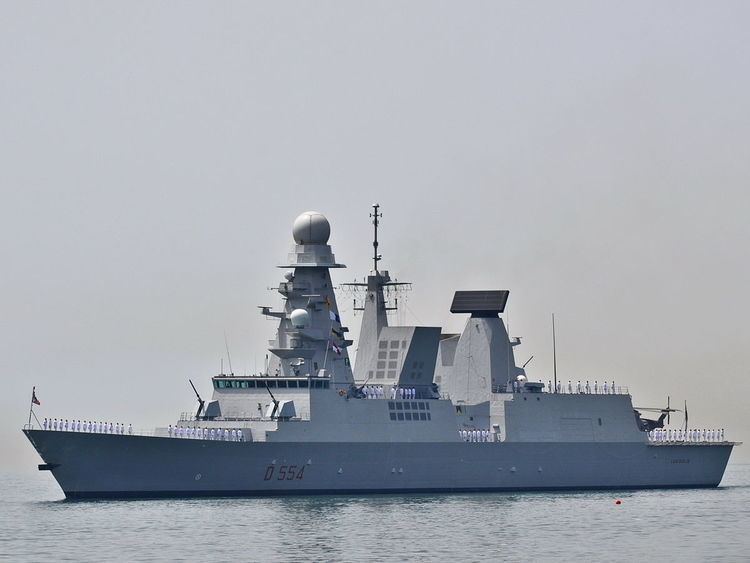 | ||
The Principal Anti Air Missile System (PAAMS) is a joint programme developed by France, Italy and the United Kingdom for an integrated anti-aircraft warfare system. The prime contractor is EUROPAAMS, a joint venture between Eurosam (66%) and MBDA subsidiary UKAMS (33%). MBDA also owns 66% of Eurosam, in effect giving it a 77% share of the project. In the United Kingdom PAAMS has been given the designation Sea Viper.
Contents
The PAAMS warfare system is in service with the Royal Navy, French Navy and the Italian Navy.
Background
PAAMS was originally intended to be deployed in the 'Common New Generation Frigate' (also known as the Horizon-class frigate) for the navies of the United Kingdom, France and Italy. The French DGA placed a contract with EUROPAAMS on 11 August 1999 for the development production of the PAAMS warfare system along with the associated Long Range Radar (LRR) system. The contract included including one PAAMS system and one LRR for each of the first British, French and Italian new class of warships. However irreconcilable differences in the design requirements led to the United Kingdom leaving the 'Common New Generation Frigate' project in October 1999. After withdrawing, Britain instead decided to pursue a national warship design, designated the 'Type 45 destroyer'. The United Kingdom remained committed to the PAAMS project. As a result of efforts to achieve economies of scale, the PAAMS command system shares common architecture between the Horizon-class and Type 45 destroyers. On 28 January 2009, the PAAMS was given its official designation of Sea Viper by the Royal Navy.
PAAMS components
Both variants of the PAAMS operate in conjunction with the S1850M Long Range Early Warning Radar.
Capabilities
PAAMS is designed to track, target and destroy a variety of high performance air threats, including saturation attacks of very low altitude, supersonic cruise missiles, fighter aircraft and UAVs. PAAMS can launch 8 missiles in under 10 seconds with its Sylver Vertical Launching System, and simultaneously guide up to 16 missiles at once. The British PAAMS(S) variant consists of both the SAMPSON and S1850M long range radars and is capable of tracking in excess of 1,000 targets at ranges of up-to 400 km. BAE Systems also claims that its SAMPSON radar has "excellent detection of stealth aircraft and missiles". Nick Brown the editor-in-chief of Jane’s International Defence Review was quoted by The Huffington Post saying, "It’s [Type 45 destroyer] certainly one of the most advanced air defence ships in the world... The US Aegis system is similar, but Sea Viper (PAAMS) is more advanced."
